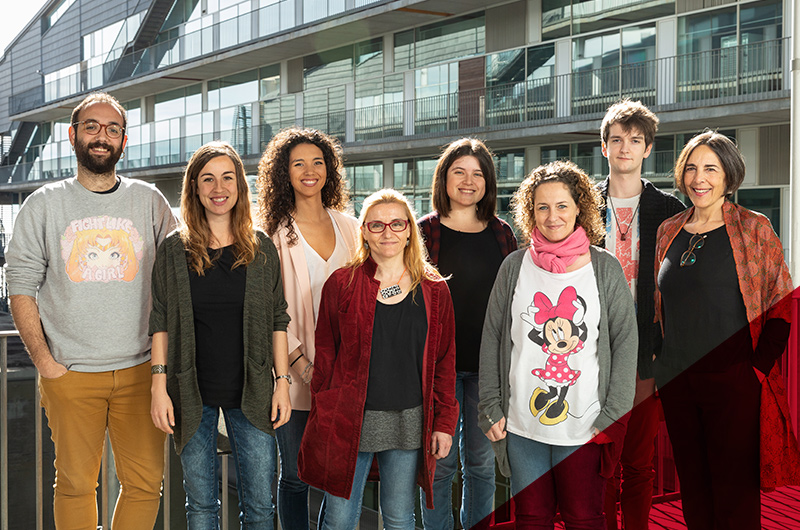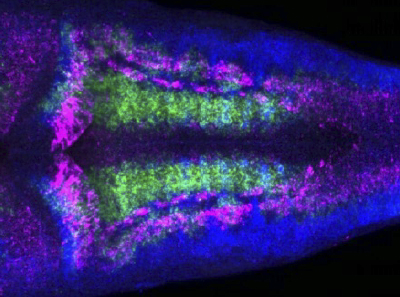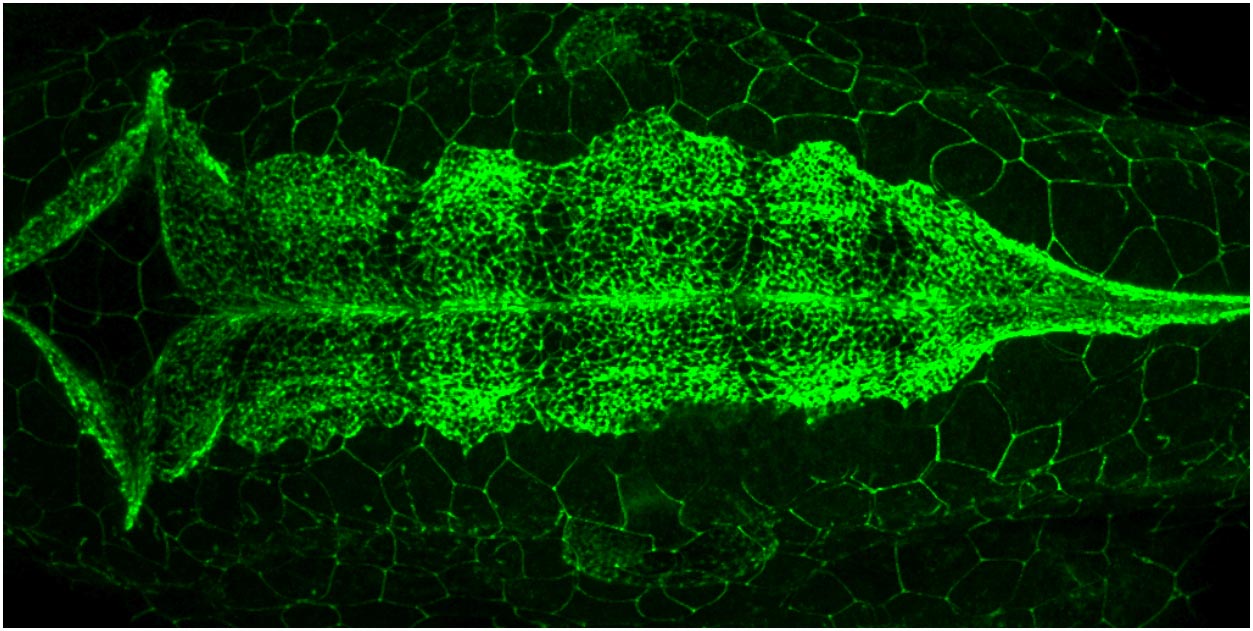Developmental Neurobiology
Cristina Pujades

Group website
Research Outline
 The assembly of functional neural circuits requires the specification of neuronal identities and the execution of developmental programs that establish precise neural network wiring. Our main biological aim is to understand how spatiotemporally coordinated cell progenitor specification and differentiation occurs alongside morphogenesis to construct the functional brain. Thus, we blend the information provided by morphogenesis and tissue growth studies -balancing progenitors vs. differentiated cells-, with the reconstruction of cell lineages, with the demand to incorporate the time as a crucial factor. Reconstructing the lineage relationships and dynamic event histories of individual cells within their native context is central to understand how the wide diversity of cell types develops during the construction of an organ.
The assembly of functional neural circuits requires the specification of neuronal identities and the execution of developmental programs that establish precise neural network wiring. Our main biological aim is to understand how spatiotemporally coordinated cell progenitor specification and differentiation occurs alongside morphogenesis to construct the functional brain. Thus, we blend the information provided by morphogenesis and tissue growth studies -balancing progenitors vs. differentiated cells-, with the reconstruction of cell lineages, with the demand to incorporate the time as a crucial factor. Reconstructing the lineage relationships and dynamic event histories of individual cells within their native context is central to understand how the wide diversity of cell types develops during the construction of an organ.
Research Lines
- Uncovering the clonal dynamics of the hindbrain.
Balancing proliferation and differentiation. We will life-monitor the overall hindbrain growth and the growth of specific progenitor populations, using genetic clonal experiments combined with a machine learning-based analysis.
- Deciphering how cell diversity is generated in the developing hindbrain.
We want to understand how the cell progenitor/neurogenic/gliogenic capacities are coordinately allocated to specific territories of the hindbrain over time. We will combine functional studies, genetic cell ablation, and cell lineage studies using high-resolution in vivo imaging.
- Dissecting the gene regulatory networks (GRN) that restrict progenitor vs. neurogenic and gliogenic capacities.
We will combine in silico analyses of cis-regulatory regions with transcriptomic analyses in order to unveil transcriptional activation signatures that foreshadow the dynamic cell progenitor cell states within the hindbrain.
We make use of the zebrafish embryo as a model system because it permits us to combine high-resolution in vivo imaging with genetics and genome-editing tools.
Team during 2017-18
- Postdocs: Covadonga Fernandez-Hevia, Christian Cortés-Campos.
- PhD students: Carolyn Engel, Carla Belmonte, Ivan Belzunce, Adrià Voltes.
-
Technicians: Sara Calatayud.
Selected publications 2017-18
- Pant, D, Dorboz, I, Schluter, A,…. Pujades, C, Fatemi, Boesplug-Tanguy, O, Pujol, A (2019) Loss of the sphingolipid desaturase DEGS1 causes hypomyelinating leukodystrophy. J Clin Invest, Jan 8 pii: 123959. https://www.jci.org/articles/view/123959.
- Letelier, J, Terriente, J, Voltes, A, Belzunce, I, Undurraga, C, Polvillo, R, Devos, L, Tena, J, Maeso, I, Retaux, S, Gomez-Skarmeta, JL, Martinez-Morales, JR, Pujades, C (2018) The evolutionary emergence of the rac3b/rfng/sgca regulatory cluster refined mechanisms for hindbrain boundaries formation. PNAS Apr 17;115(16):E3731-E3740. https://www.pnas.org/content/115/16/E3731.long.
- Dyballa, S, Savy, T, Germann, P, Mikula, K, Remesikova, M, Spir, R, Zecca, A, Peyrieras, N, Pujades, C (2017) Distribution of neurosensory progenitor pools during inner ear morphogenesis unveiled by cell lineage reconstruction. eLife Jan 4;6. pii: e22268. doi: 10.7554/eLife.22268. https://elifesciences.org/articles/22268.

